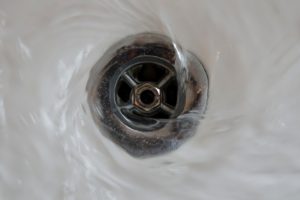What Types of Drains Are There and What Are the Differences?
 It is generally agreed that most homes use four primary drainage types to deal with rainwater, and how exactly these drains are set up can have a big effect on how they work. To give you a basic understanding of each type, we’ve put together this guide on What types of drains are there, and what are the differences?
It is generally agreed that most homes use four primary drainage types to deal with rainwater, and how exactly these drains are set up can have a big effect on how they work. To give you a basic understanding of each type, we’ve put together this guide on What types of drains are there, and what are the differences?
Runoff Drains:
These drains collect water from the roof and direct it where it won’t have a negative impact on existing structures. Runoff drains are a system of collection pipes built around the edges of the roof(known as gutters) that collect the water, then allow it to flow down pipes that end farther away from the home, or in an underground gutter system. Any home that has a basement a properly thought out runoff system will prevent all of that rainwater from saturating the earth near the basement walls. Since all homes also have a foundation that extends into the earth, having the water that would fall near the walls be directed farther out makes it evaporate quickly. This prevents moisture buildup, fungus growth, localized humidity, etc… Runoff drains can require a lot of maintenance if one has trees above or near their roofs, since fallen leaves will go into the pipes with the rainwater and occasionally clog them. These systems are very easy to clean however, making maintenance a simple and quick task.
Subsurface Drainage Systems:
These drains, also known as “French Drains”, are built underground into gardens and walkways to prevent the soil from becoming flooded, or saturated with rainwater. Saturated soil can take very long to dry and this makes it harmful to trees and grass. This drainage system consists of perforated pipes lain underground in a parallel array, with a layer of gravel then earth above them. This allows the water from the earth to easily flow through the gravel, filtering it, then into the pipe. The gravel is important because it filters the earth to prevent mud from building up in the pipes and clogging them. This type of drainage system often requires a pump since it’s pipes are often horizontal, and since small pieces of debris may get in the way of the waterflow. French drains can do miracles for a garden, but the downside is that these drains are difficult to maintain due to their being underground, and will have to be serviced and replaced every few years to guarantee effectiveness.
Catch Basins:
These basins are “backbones” for the outdoor drainage systems. Catch Basins are often at the bottom of sloped corners, and contain a grate preventing large objects to enter them. These drains are important because many times runoff drains and French drains connect to them. These basins are capable of directing a very large amount of water, so their have thick pipes which deal with the runoff from entire areas of the yard, roof, and driveways. These drains are very important and as such are not hidden, and feature a removable grate on top. This grate is very easy to remove, and the systems thick pipes and large grate entry make cleaning it a very easy task, while clogging it is extremely rare. These drains require much less maintenance than the french drains, but aren’t very good looking and don’t do as good a job at keeping the earth dry.
Foundation Drains:
These are arguably the most important drains in a house. Water buildup near a home’s foundations can erode the soil and make the home structurally unstable, which is why these drains don’t share waterways with the other systems. While runoff drains go a long way in preventing rainwater from collecting near the foundations, some still gets there. Often time it seeps in through the earth, and the foundations walls prevent sunlight and other factors from drying the earth quickly; which is why these drains are so important. Some use pumps, and others don’t, but in cases where there are basements i strongly recommend not taking any risks.
New Canadian Drain & Plumbing is a top tared plumbing company in Toronto; offering plumbing and drain repairs.


